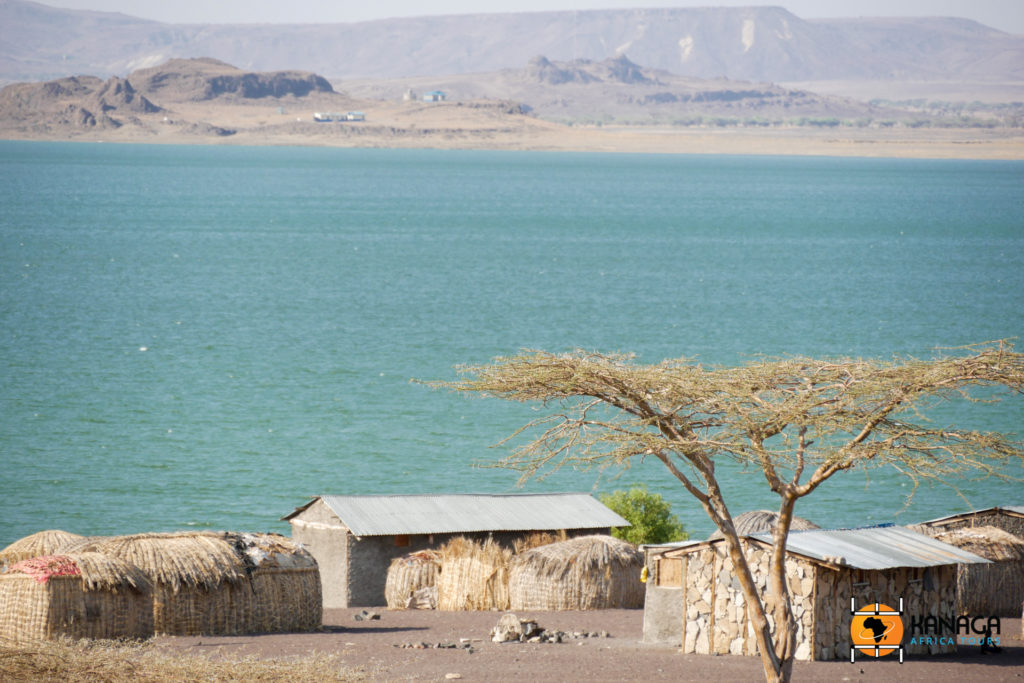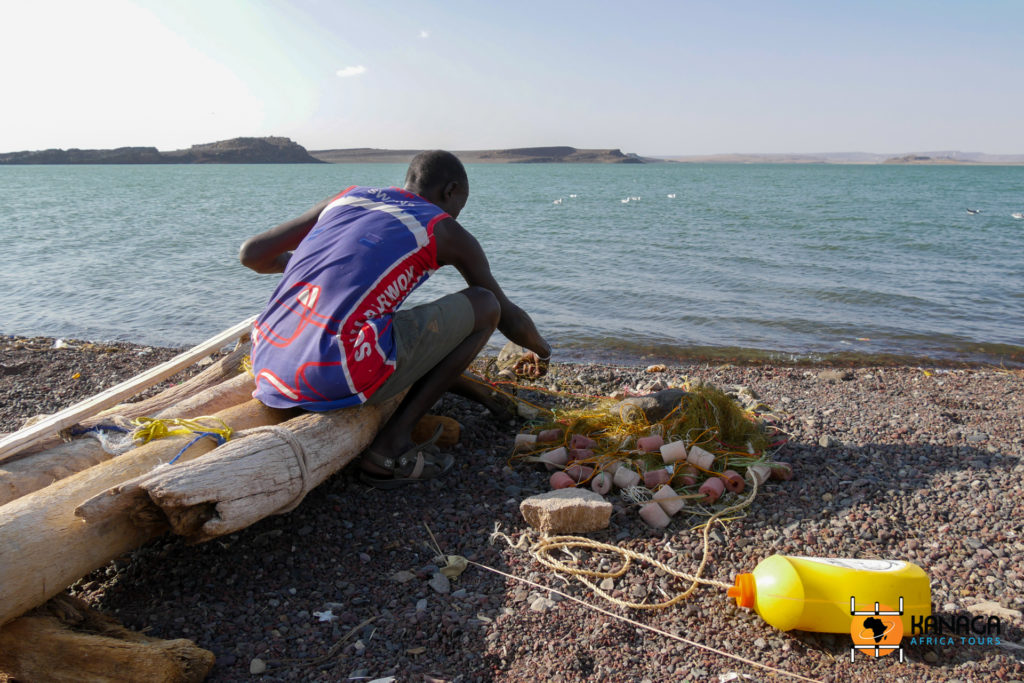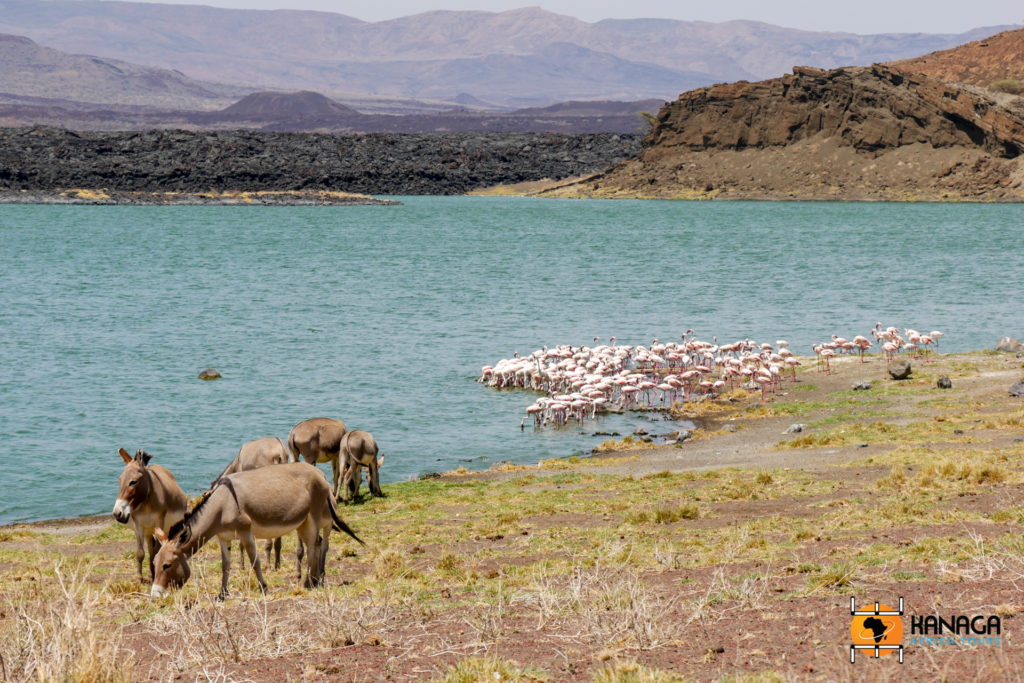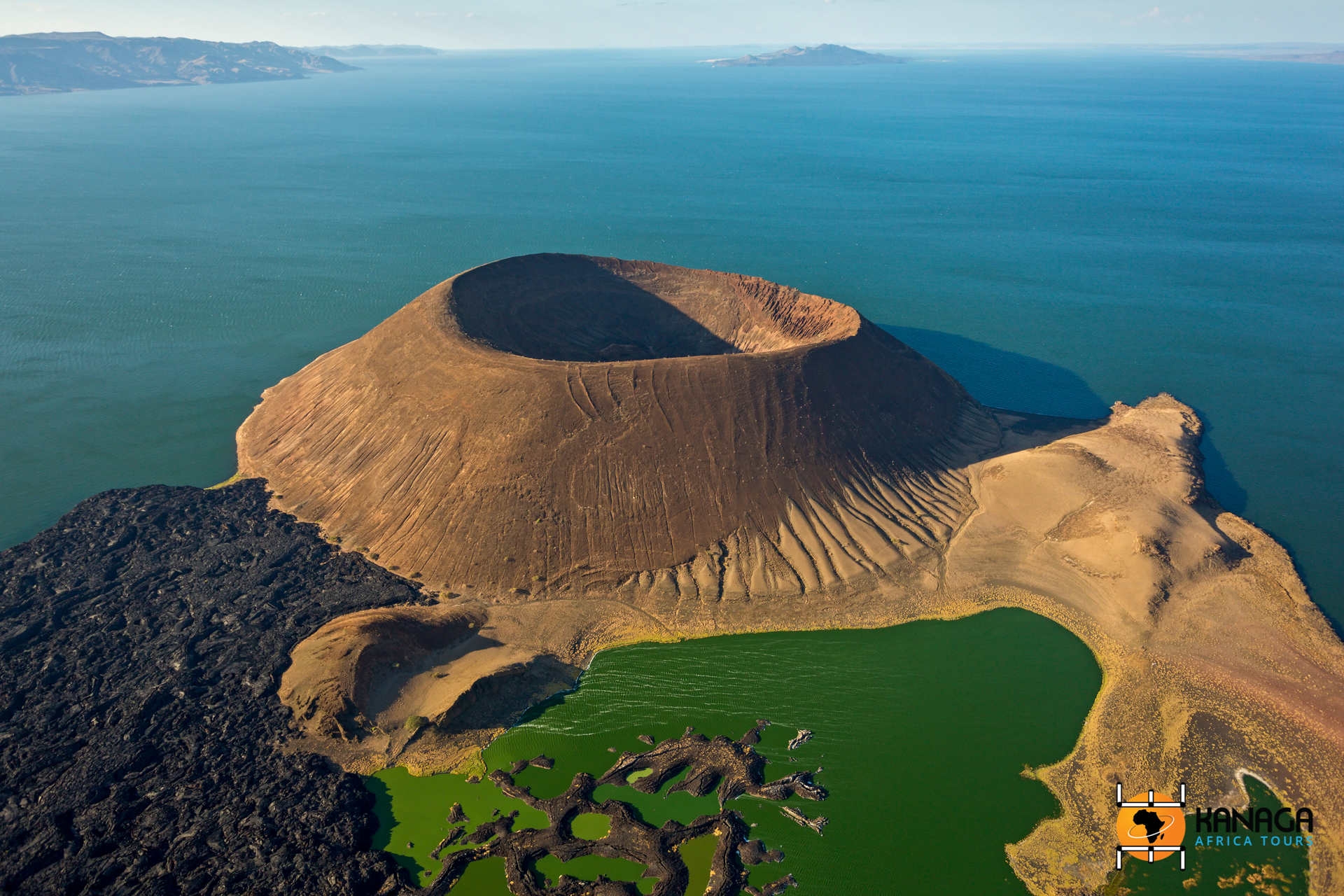There is an unknown Kenya, “light years” away from the tropical coasts, teeming with life and tourist resorts, or from the beaten track of safaris. A Kenya of heartbreakingly beautiful wastelands, endless desert or semi-desert moors stretching as far as the eye can see to the north, sunburnt savannahs and sandy expanses, inhabited only by a few brave nomadic peoples with their herds, the only guardians of the secrets of a life reduced to the essential.
Venturing into the deep north of the country, every time you come across any living form, you would exclaim: there is life on Mars!
One of the first mirages to appear on the edge of reality, between the Kaisut and Chalbi Deserts, is the Marsabit National Park. A true tropical mountain oasis, with a particular rainfall microclimate, it miraculously opens up in the centre of an inexorably desert and torrid region, a point of passage for all the nomadic or semi-nomadic tribes in search of pasture and provisions. Here the town of the same name is a colourful hub of Gabbra, Rendille, Borana and Somali peoples, while the surrounding landscape is covered in dense forests and volcanic lakes, including Lake Paradiso (a name, a guarantee), which attracts numerous bird species, as well as elephants, zebras, giraffes, buffalo and lions.
But the real source of life in the boundless North, on the edge of the salt flats and volcanic dunes of the Chalbi desert, is the spectacular Lake Turkana, named after the region’s main population, surrounded by an extra-terrestrial landscape of extraordinary beauty and fascination. Situated in the Rift Valley, it boasts the record of being the largest alkaline lake in the world in a desert area, a real jade-coloured sea, with a low saline concentration that allows a surprising biodiversity.
Its waters are home to three islands, the North Island, Central Island and South Island, the latter included with the neighbouring Sibiloi National Park in the UNESCO World Heritage list since 1997, for their environmental and landscape value and for their contribution to the study of palaeontology and human evolution.
On the north-eastern shores, semi-desert and sporadic forests on the Kulal and Lokilipi mountains are unexpectedly home to a wide variety of wildlife, including Grevy’s zebras, oryx, leopards and cheetahs, lions and hyenas.
The prehistoric site of Kobi Fora, among the many vestiges and stratified fossil remains from different eras, has yielded the skull of a homo habilis, dating back two million years.
On the windy shores of the lake, not far from the village of Loyangalani, one of Kenya’s smallest communities, the El Molo fishermen, go about their business with their log boats, which they use to tackle the sudden and stormy waters of Lake Turkana.
But the undisputed geological pearl of Lake Turkana is the surreal conical crater of Nabuyatom, which towers in its perfectly circular shape, on the extreme southern shore of the lake, in a volcanic landscape of pitch-black lava rock and emerald green alkaline basins, which together with South and Central Island, are home to myriads of pink flamingos and the largest sanctuaries of large Nilotic crocodiles, which find refuge here for reproduction.
A lunar and surreal landscape that is among the most beautiful in Kenya.







